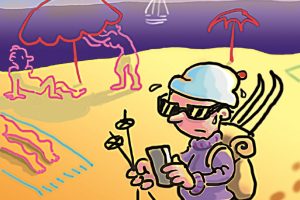Search
Our evolution developed a series of technical innovations such as the control of fire, agriculture and railways, which transformed not only the way we eat, but also the way we live.
What made urban experiments possible at the end of the Holocene? What selective pressures made cities more successful than other alternatives?
Integrating nature into the city is still a pending matter: the presence of trees in our urban environment still has much room for improvement.
Migrating time after time, we reached every corner of the world. Slowly at first. Then, with the invention of boats, quite fast. Today, thanks to motorised vehicles, at great speed. We are the most migratory species in the world.
Laura Villoria Parc de la Rambleta, in the San Marcelino neighbourhood in Valencia, is a reference for the conservation of local biodiversity. The climate change, pollution, deforestation or the loss of biodiversity are phenomena that have, for some time, been taken into account in the preparation of
My thingy (a smartphone) is not smart. Versatile and fast, yes; intelligent, not at all. It controls a lot of routines and no reasoning. That is not intelligence.






